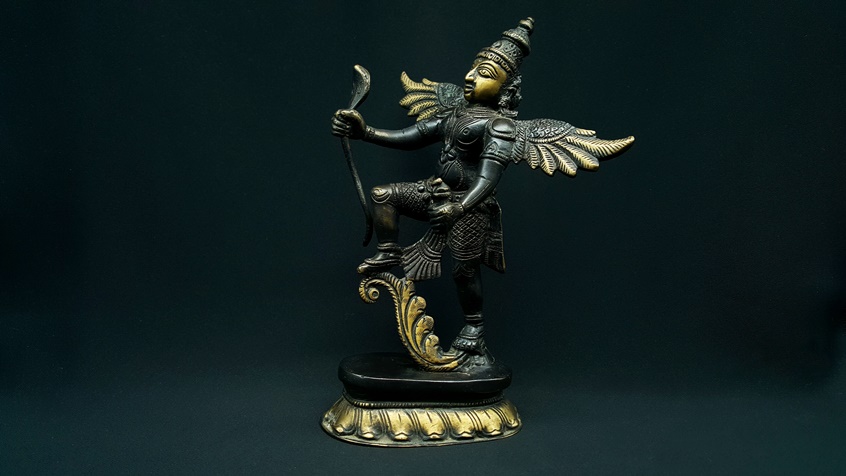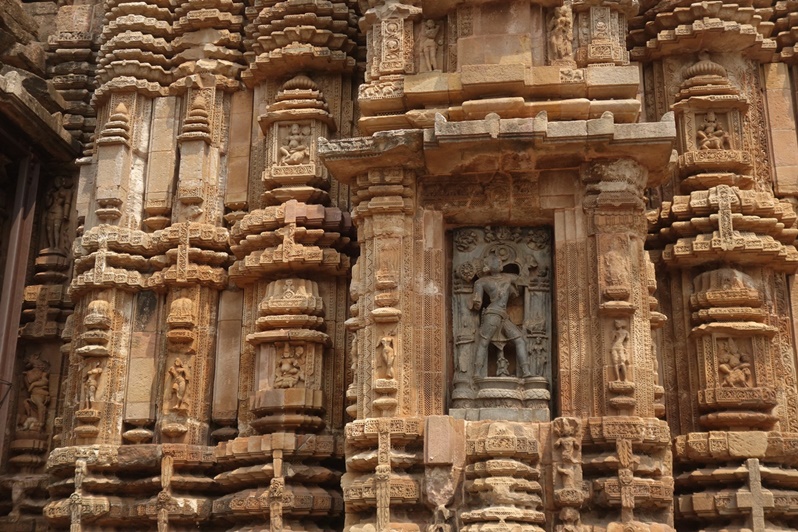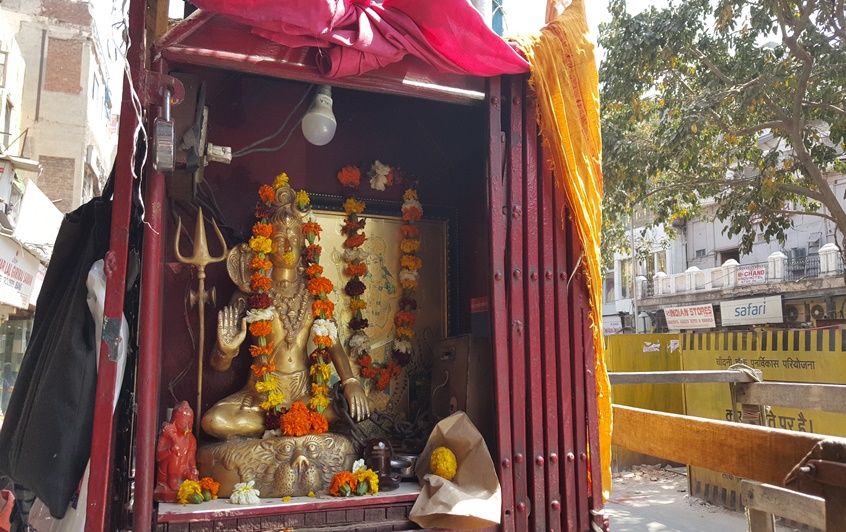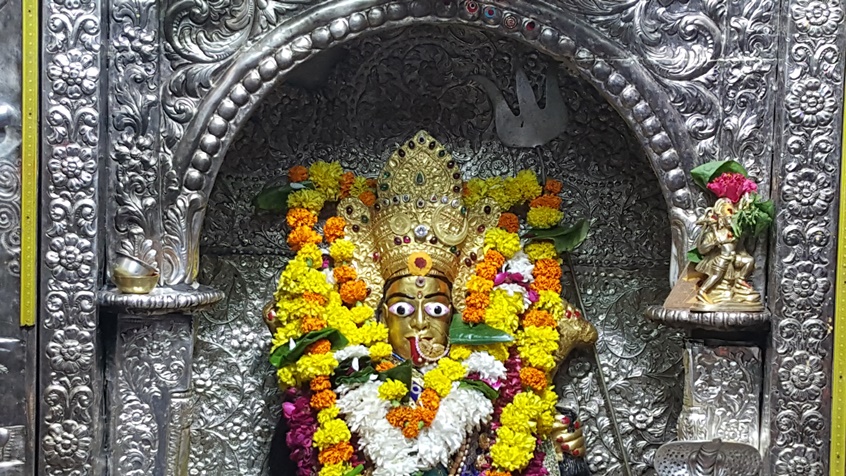
par Bertrand Bellaize, le 31 août 2020
Hindouisme - divinité hindoue : la Trimurti – Vishnou
La Trimurti est le socle de l’enseignement spirituel hindou qui permet d’expliciter le monde manifesté dans laquelle nous évoluons : Brahma représente le principe créateur, Vishnou, le préservateur et Shiva le destructeur qui permet le renouvellement. Ces trois forces sont indissociables, complémentaires et opposées.
Le Pudma Purana relate que pour conserver le monde qu’il avait crée, Brahma tira de son flanc droit Vishnou et pour pouvoir le détruire, il sortit de son flanc gauche Shiva.
Vishnou est celui qui préserve, protège, maintient la vie. Il est le garant de l'ordre qui permet à chacun de s'épanouir. Attentif, bienveillant, il rend justice, assure la paix et peut aussi se révéler un guerrier redoutable si besoin.
Vishnou incarne le Guna Sattva, la forme de l’énergie qui tend vers la cohésion, vers le centre, vers la concentration.
Vishnou symbolise donc le principe de la continuation, de la durée dans le temps ainsi que les qualités d’harmonie, de tranquilité.
Vishnou, Nârâyana
Sous ce nom, Vishnou représente l’état latent avant la manifestation : il dort, Nârâyana signifie « reposant sur les eaux », dans le laps de temps qui se déroule entre deux mondes. Le serpent « Vestige » sur lequel il repose flotte sur les eaux primordiales. Vestige symbolise la nature non manifestée, le stade premier de la Conscience.
C’est donc l’aspect passif de Vishnou qui est alors matérialisé. Un aspect qui met en avant la plénitude, la contemplation, la passivité, l’immobilité : le non agir.
Cet état contient tous les possibles, en germe : c’est le ferment qui existe avant la manifestation de toutes les formes.
Vishnou maintient donc aussi la vie, à l’état latent, entre les deux cycles de la création et de la destruction.
D’où la signification de Vishnou, provenant de Vish, qui se répand, s’étend, s’insinue : « Celui qui pénètre ». Vishnou est celui qui est toujours là en arrière plan de toutes choses, de toutes formes soit l’immuable, l’omniscient, l’absolu.
Vishnou, le protecteur de l’univers
Une fois, le monde crée, il est nécessaire qu’il puisse se maintenir, se déployer, fructifier… Un des rôles primordiaux de Vishnou, dans cet aspect actif, est donc de créer des conditions pour que la vie puisse se développer et de les garantir.
On l’appelle dés lors Dharmadhikarin, le défenseur du Dharma (l’ordre juste).
Il est donc souvent revêtu des qualités d’un bon roi veillant au bien être de ses sujets, tel un bon père pour ses enfants : on le vénère alors pour sa bonté, son sens de la justice, son équité, sa capacité au maintien de l’ordre, de la sécurité.
Il peut alors prendre un aspect beaucoup plus redoutable en tant que guerrier faisant respecter la loi (de là, certains de ses attributs tels la massue, le disque, l’arc).
Il est alors nommé Vâsudeva, dieu de bonté, des richesses, Bhagavant, le bienheureux, Chakrapâni, celui qui porte le disque, Jagannâtha, le protecteur de l’univers.
C’est ainsi que Vishnou intervient dans le monde des hommes pour rétablir l’harmonie, le dharma sous différentes formes connues sous le nom d’avatar. Sous une enveloppe vivante, il s’incarne et joue son rôle de sauveur tout en connaissant, comme les humains, les péripéties de l’existence, souffrances, joies, aventures...
Ses dix avatars les plus connus sont : le poisson Matsya, la tortue Kûrma, le sanglier Varâha. La quatrième incarnation est un être fantastique mi-homme, mi-lion Narasimha. Les suivantes sont humaines : Vâmana, le nain, Rama, l’amant divin, Krishna, puis Bouddha et enfin Kalki qui se présentera à la fin de l’ère du Kali Yuga.
Il est intéressant de constater que lors de chacune des incarnations, Vishnou utilise des moyens divers et variés, soit la force physique, soit la ruse, soit ses pouvoirs (d’illusion).
Les 5 attributs fondamentaux de Vishnou
La conque : Panchajanya (Née des cinq éléments), le son grave éloigne les démons mais surtout symbolise l’infini et l’expansion (les anneaux partent d’un point pour s’élargir sans fin). Elle provient de l’eau, à l’origine de la création. Le son qu’elle produit est considéré comme le son primordial. La conque est reliée à l’élément eau.
Le disque : nommé Sudarshana (Bel à voir), ce Chakra possède de nombreuses significations et symboliques : rond, cercle, soleil : il peut être figuré comme un disque, une roue avec six rayons... dont le centre représente la cohésion, l’immobilité. Hors du centre, les rayons de la roue symbolisent le mental qui s’agite dans tous les sens au gré des évènements.
La roue représente également le cycle de la naissance et de la mort qui fait intégralement partie de la vie et marque le changement continuel.
Le Chakra symbolise aussi le soleil, la lumière, le feu qui permet de détruire l’ignorance, de voir la pure réalité : ainsi les dieux l’utilisent-il comme arme pour détruire les démons qui sont un archétype de nos fausses croyances. Elément : le feu.
L’arc : Sharnga. les flèches représentent nos sens, notre capacité à percevoir. Elles sont lancées par notre esprit (l’arc) et demandent une grande concentration, une capacité à maîtriser nos pensées : plus elles sont acérées, plus elles atteignent leur cible, meilleure est notre perception de la réalité au-delà de l’illusion, de l’ignorance. Le carquois incarne la réserve d’énergie nécessaire à l’action. Elément, l’air.
La massue : Kaumodaki « La massue est la puissance de connaître » (Vishnu Purdna).
Arme primitive, certes, incarnation de la force brute mais aussi de la maîtrise des forces instinctives, physiques et de la nature. C’est l’arme de la maîtrise du mental par excellence. C’est aussi l’arme de prédilection de Kali. Elément, la terre.
L’épée: Nandaka, source de joie. Symbole de sagesse : elle tranche l’ignorance, dissout les ténèbres qui obscurcissent l’esprit. Elle nous libère des liens de l’attachement (de tout ce qui nous sépare de notre nature ultime, l’absolu : croyances, démons intérieurs, biens matériels…).
Ce sont les cinq principaux attributs que Vishnou maîtrise, lui permettant ainsi de faire régner l’harmonie dans l’univers.
Il peut être également accompagné par un parasol, un char, le chasse mouche…. (voir articles du Blog sur les attributs des divinités hindoues) qui ont chacun leurs significations.
Les formes de Vishnou
Soit debout, soit assis sur un lotus, il est dépeint sous une forme paisible quand ses qualités de protecteur sont mises en avant : sa peau peut être d’un noir ou d’un bleu sombre, couleur de l’éther représentant l’absolu. Il est revêtu de jaune qui symboliquement correspond au centre, à la lumière et bien sûr au soleil. Le jaune incarne aussi la connaissance.
Il porte sur la gorge, le collier de victoire (Vaijaynati), guirlande de fleurs odorantes et de 5 rangs de gemmes (qui représentent les 5 cinq sens et la manifestation), de nombreux bracelets et bijoux ayant tous des significations précises, telles les boucles d’oreilles en formes de poissons ou de makara (monstres marins) qui montrent les deux méthodes menant à la connaissance : par l’intellect ou par la perception intuitive ; ou bien la tiare indiquant à la fois son assise royale et la réalité inconnaissable.
Sa poitrine est ornée d’une touffe de poil (Shri-vasta, Cher à la fortune) rappelant son amour pour Lakshmi, sa shakti et aussi la Nature fondamentale de l’Etre.
Il porte le cordon sacré réalisé à partir de trois fils figurant les trois lettres A.U.M, le son sacré primordial.
Le lotus : Padma, sur lequel il est positionné, symbolise la pureté, la beauté, la perfection. Il est le sein maternel, la matrice d'où viennent toutes choses. C'est le siège du principe féminin, la Shakti.
Le lotus donne une fleur de toute beauté, alors qu'il provient d'un environnement marécageux, obscur, repoussant : il représente donc la possibilité de transformation, d'élévation.
C'est ainsi le trône des dieux, la matrice dont ils sont issus. Il figure aussi le centre, le Guna Sattva. Ses pétales expriment le déploiement de l’univers.
Sa monture est Garuda : « Verbe ailé » mi homme, mi aigle. L’aigle est un oiseau solaire, il tutoie les hauteurs, le firmament, il est le roi du ciel, invincible, le maître de l’espace. Il allie la vitesse de la lumière avec la capacité de se mouvoir d’un monde à un autre. Il représente aussi, plus fondamentalement les paroles des Védas.
Le culte de Vishnou
« Méditons sur le seigneur suprême, l’Illimité, l’Immuable, l’Omniscient, sur lui qui donne la joie au monde, qui demeure dans l’océan du coeur de chaque être, qui est le but de tout » extrait du Nârayana-Sukta, chanté par les fidèles.
Dans les temps védiques, Vishnou était seulement un dieu mineur au service d’Indra, le souverain des dieux. Il était alors déjà honoré pour sa bonté et sa contribution au maintien de l’ordre cosmique. Cependant avec l’avènement de l’hindouisme, il prend la place d’Indra et devient le garant du Dharma.
Aujourd’hui Vishnou, en Inde, est une des divinités les plus populaires, les plus honorées sous une forme dévotionnelle. Ainsi de nombreuses divinités, héros ... locaux, vénérés avant Vishnou ont été remplacés par son culte ou celui d’un de ses avatars, d’une ses formes locales (tel Balaji).
Vishnou est honoré devant son image (Murti) mais aussi à travers des formes abstraites tel le Shâlagrama, une ammonite fossile ou le Vishnu pada, l’empreinte de ses pieds. Les rituels consistent en offrandes, récitations de mantras, chants, lectures de textes sacrés, danses, musiques… dans une grande ferveur soit en groupe soit à la maison.
Le dimanche est son jour de prédilection, les offrandes sont plutôt douces et sucrées.
Les fêtes dédiées à Vishnou sont nombreuses, tel Vaikuntha Ekadashi (pour recevoir le Darshan de Vishnou), ou Le réveil de Vishnu et son mariage avec Tulsi… sans compter les fêtes locales marquant l’anniversaire de la construction du temple...
Il existe aussi une Sadhana ascétique ( chemin spirituel) rattaché à Vishnou et les Sannyasins (renonçants) se reconnaissent la couleur jaune ou blanc de leurs vêtements, à leur mala (chapelet) en bois de Tulsi, ...
Sources
Sarah Combe - Un et Multiple – Editions Dervy
Alain Daniélou : Mythes et Dieux de l’Inde


